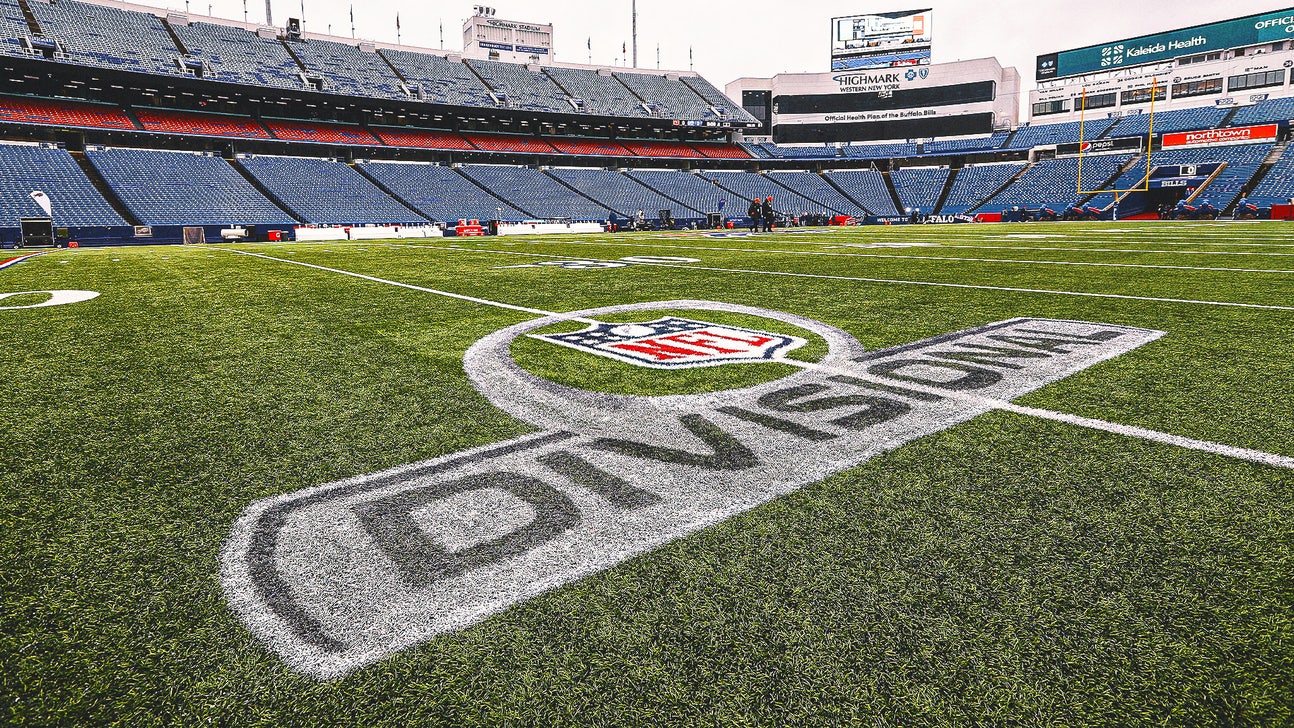
NFL Playoff Format: How does the NFL postseason work?
Back in 2020, the NFL introduced a new playoff format focused on two key areas — more teams and an expanded wild-card round.
Here's everything you need to know about the NFL postseason format:
How many teams make the NFL playoffs?
Fourteen teams will make the NFL playoffs — seven from both the NFC and AFC. This is an increase over the previous format, which had 12 teams.
This is broken out with four division winners in each conference as well as three wild-card teams.
Bears beat Packers 22-16 in OT, Is Chicago a Super Bowl Contender? | The Herd
How are the teams seeded?
Each league uses the same seeding format below:
- No. 1 seed: Best record in the NFC or AFC
- No. 2 seed: Second-best record for a division winner
- No. 3 seed: Third-best record for a division winner
- No. 4 seed: Fourth-best record for a division winner
- No. 5 seed: Best record for Wild-Card teams
- No. 6 seed: Second-best record for Wild-Card teams
- No. 7 seed: Third-best record for Wild-Card teams
Does any team receive a bye?
The No. 1 seed in each conference receives a bye and advances automatically to the divisional round. The wild-card round features the below format in each league:
- No. 7 seed at No. 2 seed
- No. 6 seed at No. 3 seed
- No. 5 seed at No. 4 seed
How many rounds are in the NFL Playoffs?
There are four rounds:
- Wild-card round
- Divisional round
- Conference championship round
- Super Bowl
Will the NFL playoffs have re-seeding?
While there is no reseeding in the NFL playoffs, the host of each game is determined by seeding number, not position in the bracket. After the wild-card games are completed, the matchups of the divisional playoffs feature the lowest remaining seed in each conference traveling to the highest remaining seed and the second-lowest remaining seed traveling to the second-highest remaining seed.
What are the division-title tiebreakers?
Tiebreakers are categorized into two sections - within a division or within Wild-Card teams.
Breaking ties in a division
If two or more teams in a division finish with the same won-loss-tied percentages, the following tiebreaker rules will be followed until a winner is decided:
- Head-to-head (best won-lost-tied percentage in games between the clubs)
- Best won-lost-tied percentage in games played within the division
- Best won-lost-tied percentage in common games
- Best won-lost-tied percentage in games played within the conference
- Strength of victory
- Strength of schedule
- Best combined ranking among conference teams in points scored and points allowed
- Best combined ranking among all teams in points scored and points allowed
- Best net points in common games
- Best net points in all games
- Best net touchdowns in all games
- Coin toss
Breaking ties for wild-card teams
If two or more wild-card teams from different divisions finish with the same won-loss-tied percentages, the following tiebreaker rules will be followed until a winner is decided:
- If more than two teams are from the same division, eliminate all but the highest-ranked club in each division using the divisional tiebreakers
- Head-to-head, if applicable
- Best won-lost-tied percentage in games played within the conference
- Best won-lost-tied percentage in common games, minimum of four
- Strength of victory
- Strength of schedule
- Best combined ranking among conference teams in points scored and points allowed
- Best combined ranking among all teams in points scored and points allowed
- Best net points in conference games
- Best net points in all games
- Best net touchdowns in all games
- Coin toss
Full tiebreaker details can be found here.
What are the NFL playoff overtime rules?
Unlike regular-season games, which can end in a tie, postseason games cannot. NFL overtime rules in the postseason consist of as many 15-minute periods as are necessary until there is a winner, instead of the single 10-minute overtime period in the regular season. Both teams get at least one possession, even if the team that has the first possession scores a touchdown. If the team that got the ball first doesn't score a touchdown, or if the score is tied after each team has possessed the ball, the next score would end the game.
If the team that possesses the ball first commits a safety on the initial possession, the kickoff team would win and the game would end there, which is also true in the regular season.
Other details to keep in mind:
- There are no coaches’ challenges in overtime. All replay reviews will be initiated by the replay official.
- Each team gets three timeouts during a half (two overtime periods), as opposed to two timeouts during overtime in the regular season.
- The intermission between the end of regular time and the first overtime period is no more than three minutes.
- There’s a two-minute intermission between each overtime period, but no halftime intermission after the second.
- At the beginning of the third overtime period, the captain who lost the first overtime coin toss will either choose to possess the ball or select which goal line his team will defend, unless the team that won the coin toss deferred.
- If there’s still no winner at the end of a fourth overtime period, there will be another coin toss.











